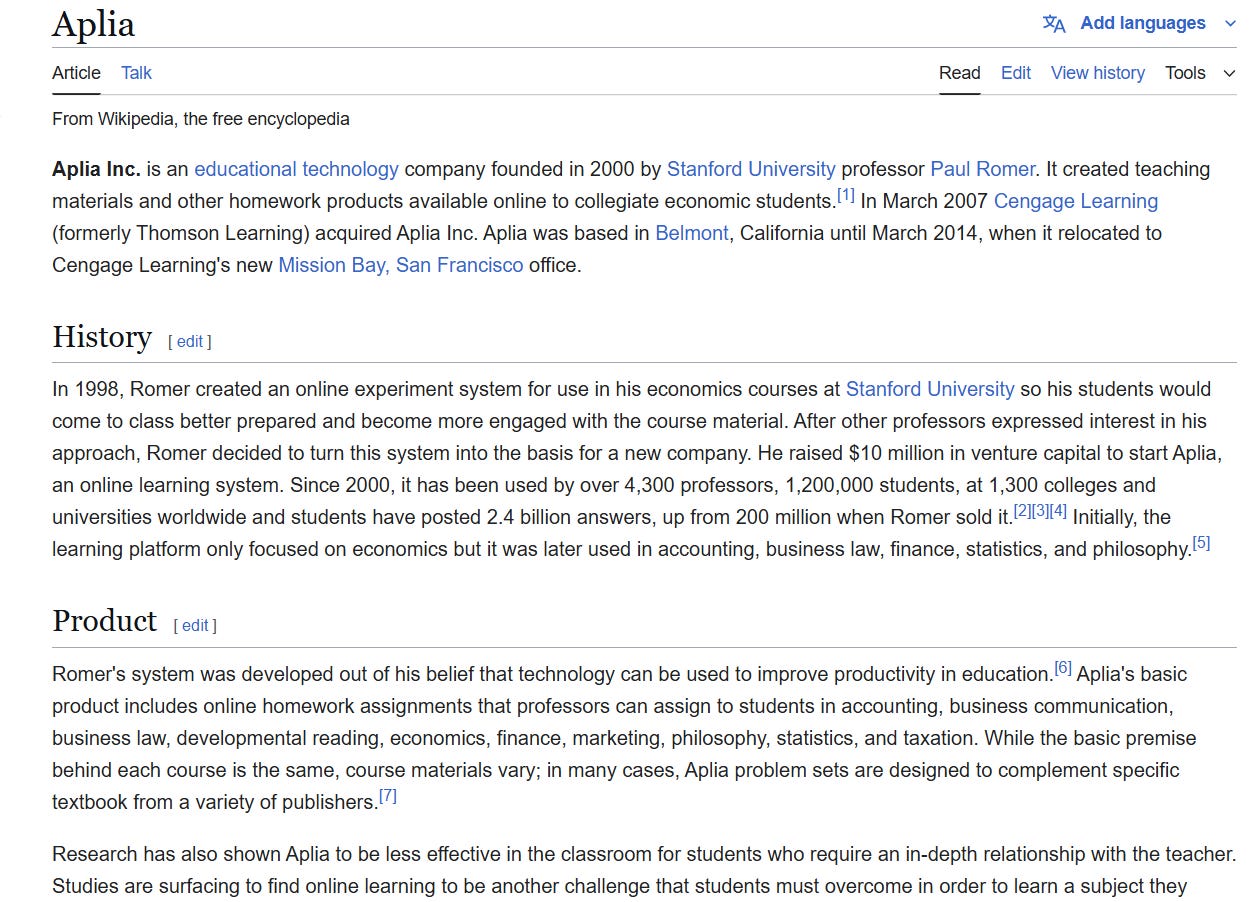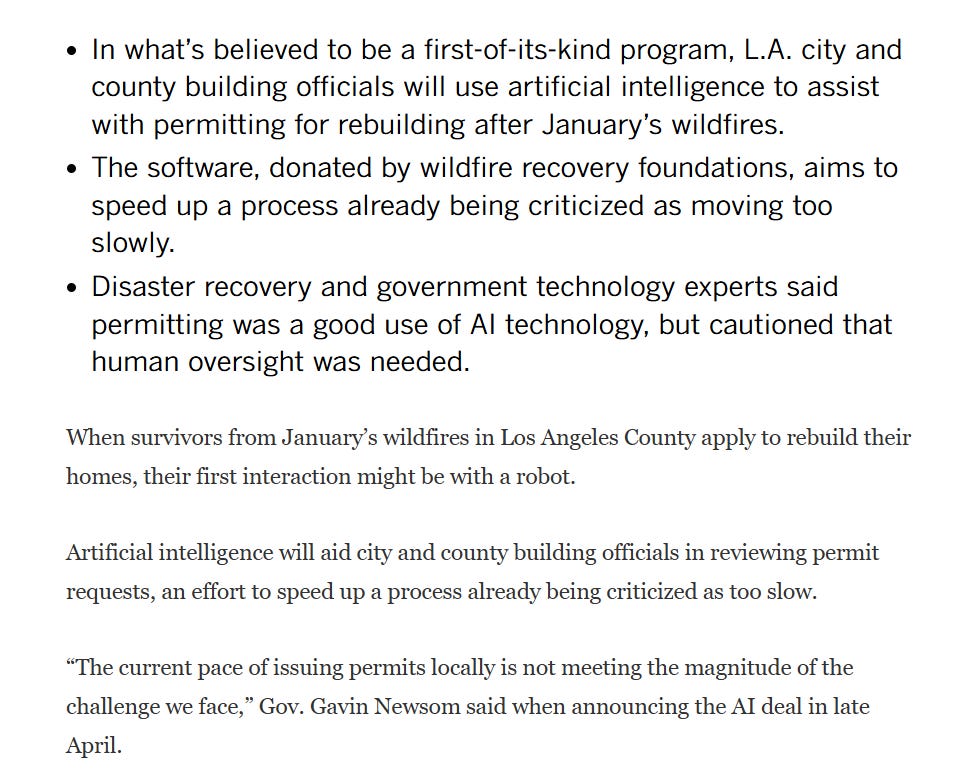My answer is “no”! I predict that powerful public-sector unions will use their muscle to oppose the adoption of AI because they anticipate that introducing the technology will threaten their job security. The private sector features shareholders who directly benefit from efficiency gains. AI is more likely to be adopted when there is an entity that anticipates how it will benefit from the adoption of this technology. Incumbent interest groups (i.e. public sector unions) will seek to block AI’s introduction if they anticipate that the technology threatens their jobs.
I will return to this point below, but now I want to zig-zag and tell a story.
Paul Romer won the Nobel Prize in Economics in 2018 for his work on economic growth. Before he won that prize, he started (back in 2000) a very successful company called Aplia. Here are some details;
Before Aplia, major public universities faced a challenge. Thousands of students would take Econ 101, write out their problem sets, and then wait weeks for the overworked Graduate Teaching Assistants (TAs) to grade these things. The Universities had to invest millions of dollars to hire these TAs to grade these. By adopting the Romer software, the Universities saved millions of dollars and students would receive immediate feedback on whether they correctly answered the question and a quick sketch of the correct answer! The software substituted for graduate student hires. Flashforward to 2025 when many graduate students at many universities are now unionizing. These unions would oppose the adoption of this software!
The point that I want you thinking about pertains to the role of Union Power in slowing down the adoption of new technologies. Such unions are especially powerful in the public sector; think of the teacher’s union, the police and firemen’s unions.
With this point in mind, let’s turn to an interesting piece from the Los Angeles Times today.
A quote from the article;
Permit me to contrast, the permitting process with and without AI. In the “old days”, a person would submit a proposal to build a specific type of property on a specific parcel of land. A public sector worker would study the proposal to see if it conforms to the stated regulations and other criteria and then send a letter back to the applicant. This whole process takes time but it creates work for the public official.
Given the urgency of starting the Los Angeles rebuilding process, this long drawn out process is inefficient. AI can be used to create a type of checklist to quickly check if the proposal conforms with the City’s rules. A person can certainly be brought in to work on special cases and to check the robot’s work. Just like Paul Romer’s Aplia software, this home building approval process software will accelerate the time it takes to get an approval to build new structures. My hunch is that this will make the Los Angeles office in charge of building approvals more efficient BUT it will reduce their need to hire more workers. Will Public Sector Unions oppose this substitution from injecting more capital into the production process? For example, will the teachers union anticipate that the introduction of Khan Academy Software might substitute for the need to hire many new teachers? An optimist would counter that teachers and robots are synergistic. There are certainly some cases where this is true.
Returning to the main theme of this piece; private firms have stronger incentives to adopt AI when such technology saves time and $ because the shareholders of the firm directly gain from efficiency progress. In the case of the public sector, some incumbents will lose out from adopting AI, and they know this. The Mancur Olson theory of asymmetric interest groups posits that they will oppose the adoption of AI in the public sector. If I am right, then the productivity of the public sector will not increase much in the years ahead.
Permit me to end with a piece of optimism. Firemen and policemen will embrace AI if it helps them to do their job more efficiently, while not threatening their jobs. So, if AI can determine what areas in the city are the most likely to experience a fire over the next 24 hours, firefighters will want to be given this “heads up”. AI is good at profiling geographic areas and making risk maps of which areas are more likely to face a given risk.







Any friction to the implementation of job-killing LLMs might in the big picture have large positive effects on forestalling bad political ramifications of rapid economic dislocation.